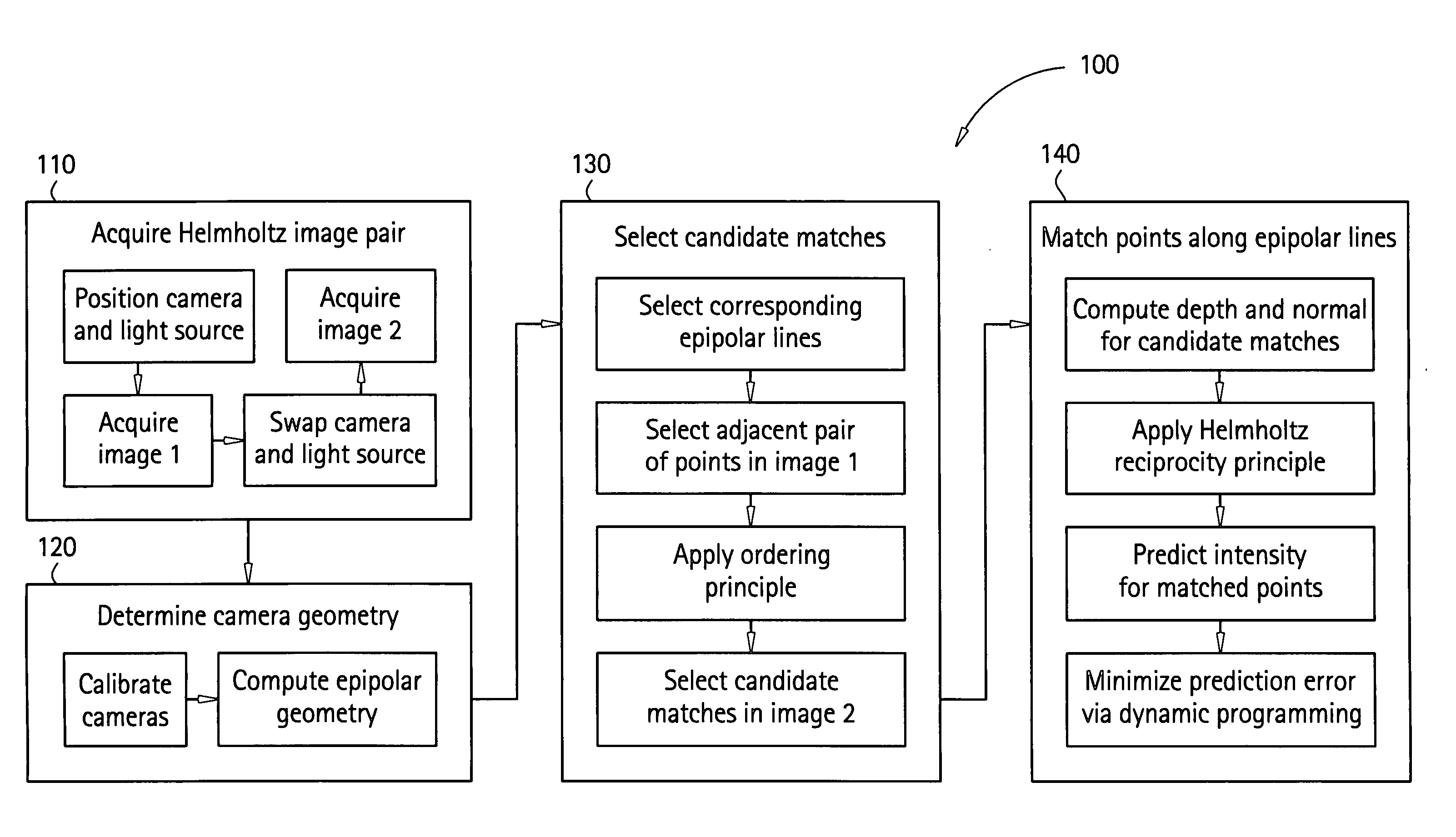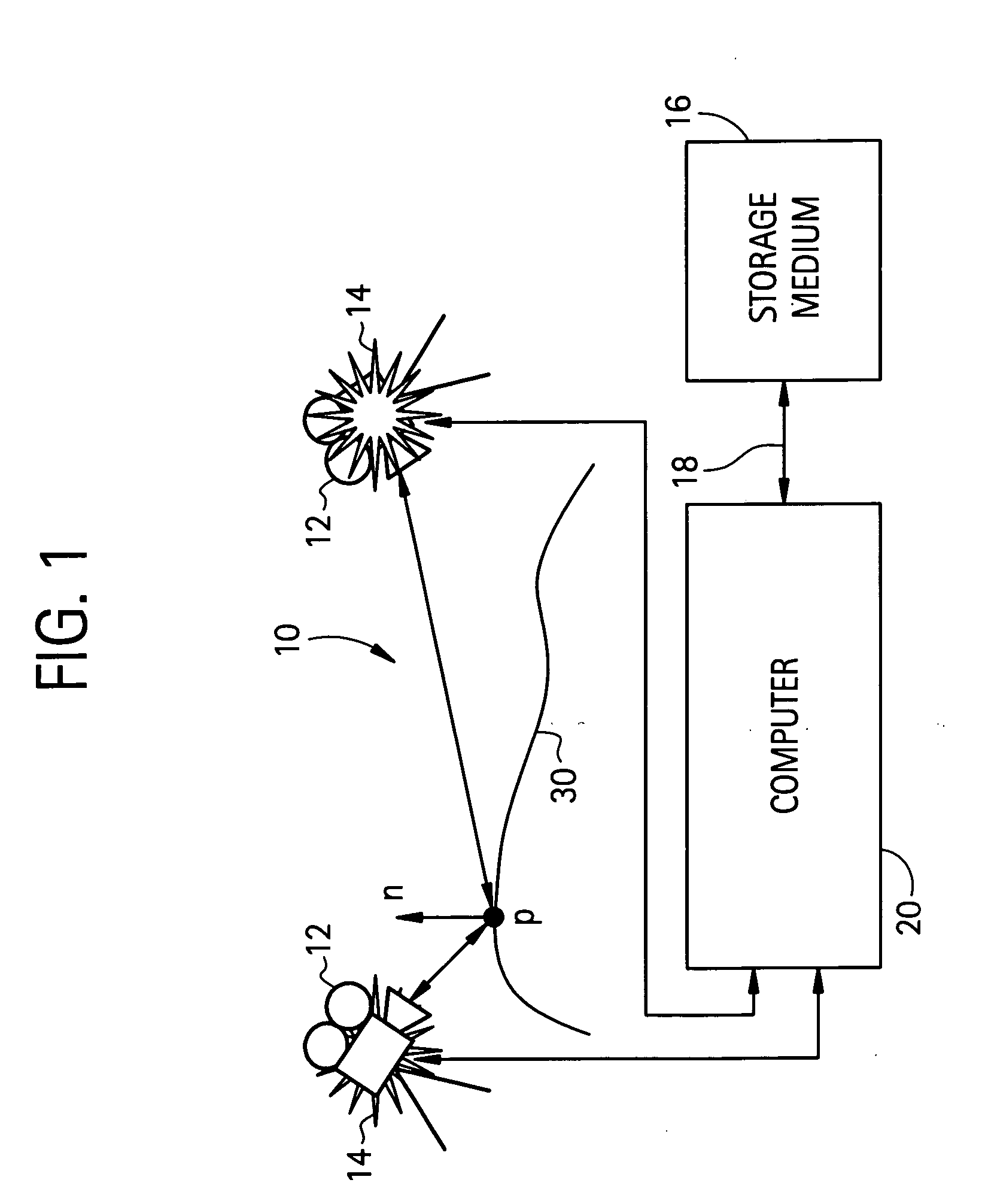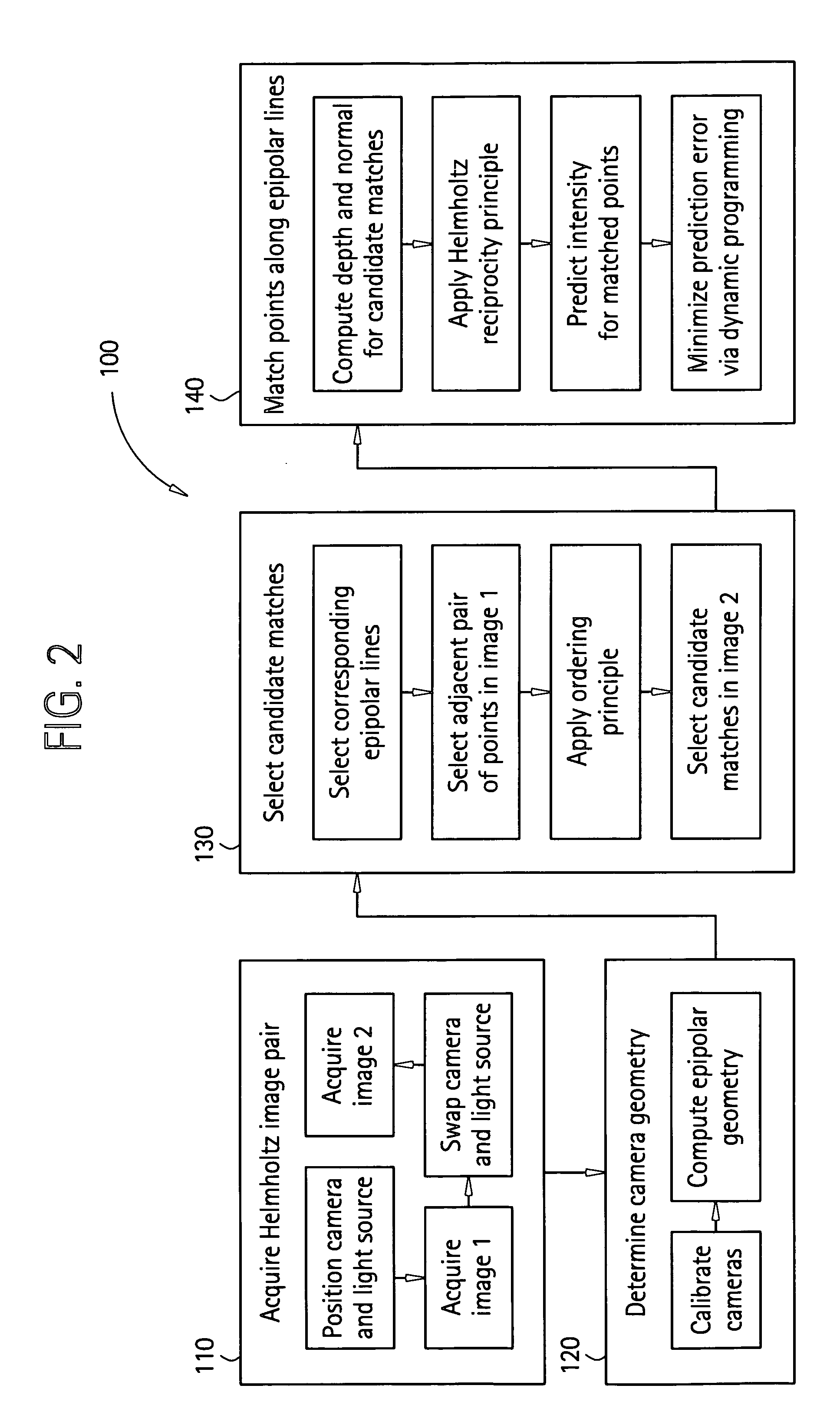Surface reconstruction and registration with a Helmholtz reciprocal image pair
a technology of surface reconstruction and image pair, applied in image data processing, instruments, image analysis, etc., can solve the problems of confounded by various types of surface finishes, inaccurate, and textured light techniques such as laser striping may require objects
- Summary
- Abstract
- Description
- Claims
- Application Information
AI Technical Summary
Problems solved by technology
Method used
Image
Examples
Embodiment Construction
Referring to FIGS. 1 and 2, disclosed herein is a method 100 and system 10 for three-dimensional reconstruction of surfaces that takes advantage of the symmetry resulting from alternating the positions of a receiver 12 e.g., a camera, and the like, herein after denoted as camera and a source 14, e.g. light source, lamp and the like hereinafter denoted as light source 14. This set up allows for the use of the Helmholtz reciprocity principle to recover the shape of and object 30 including smooth surfaces with arbitrary bi-directional reflectance distribution functions without requiring the presence of texture, as well as for exploiting mutual occlusions between images.
For a single image pair, the key idea is to approximate the intersection of a given epipolar plane and the surface with a piecewise linear curve. This formulation provides the local context needed to estimate the components of the surface normals that are contained in the epipolar plane so that for a given point on th...
PUM
 Login to View More
Login to View More Abstract
Description
Claims
Application Information
 Login to View More
Login to View More - R&D
- Intellectual Property
- Life Sciences
- Materials
- Tech Scout
- Unparalleled Data Quality
- Higher Quality Content
- 60% Fewer Hallucinations
Browse by: Latest US Patents, China's latest patents, Technical Efficacy Thesaurus, Application Domain, Technology Topic, Popular Technical Reports.
© 2025 PatSnap. All rights reserved.Legal|Privacy policy|Modern Slavery Act Transparency Statement|Sitemap|About US| Contact US: help@patsnap.com



